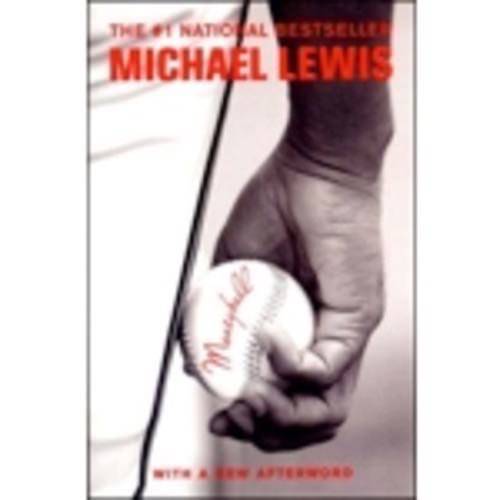Anything that can be measured can be optimized, and sometimes that optimization can lead to competitive advantage in inefficient markets. That’s the lesson of the book and popular new movie Moneyball, about the Oakland A’s baseball team and its use of statistics to overcome the limitations of its budget. It’s a seductive proposition.

What if everything were run like that, though? What if measurement and optimization were the fundamental strategic approach brought to bear on all kinds of endeavors? That may be exactly what’s happening with the rise of what’s called The Internet of Things, the emerging network of web connected streets, buildings, sensors, objects and devices expected to dominate the Internet in coming decades. But the same approach is also being taken with regard to some of our most fundamental human activities: growing up, healing our bodies and spending time alone. Three examples in particular help shed some light on the good sides and the bad sides of a Web that would make all things measurable and subject to optimization.
Becoming Human
By the time a child enters school, experts say there are about 1,000 basic words that they need to know as a foundation to maximize their reading comprehension and intellectual growth. Studies show that children from more marginal social-economic backgrounds enter school already in a vocabulary deficit relative to others.
In order to optimize the preparedness that children bring with them into school, a new class of software is becoming available to parents that combines educational play with analytics reports. New mobile apps aim to help children learn new skills and report their measured progress to parents behind the scenes.
Two recent entrants into this space are Stickery, which this month announced funding from Google Ventures, and Footsteps2Brilliance, an iPad app that has already reported substantial increase in reading comprehension by pre-schoolers.
Stickery is lead by a team with extensive backgrounds in gaming, but Footsteps2Brilliance is already performing pilot tests of its more staid software for the iPad and getting good results. One pilot test of the call-and-response, assisted reading iPad app with pre-schoolers reportedly increased reading comprehension scores from 58.5 percent to 76.4 percent.
Stickery aims to offer analytics to parents as well. The company isn’t ready to show off what it’s doing, but in a world full of games – the Stickery says the popularity of “babysitting apps” represents a huge missed opportunity.
Not everyone sees it like this, though. In a recent write-up of the Waldorf School of the Peninsula, in the heart of Silicon Valley but dedicated to avoiding technology’s influence over children, a contrary perspective was articulated vehemently.
“The idea that an app on an iPad can better teach my kids to read or do arithmetic, that’s ridiculous,” Alan Eagle of Google’s Executive Communications team told the New York Times.
Critics of this kind of approach have also raised concerns regarding lost connection to nature, to unstructured free exploration and creativity and to the parts of life that cannot ever be measured but that warrant substantial investment for the good of a whole child and adult.
It’s hard to know how many of these critiques are really new, though, and how many of them are timeless, ideological and at risk of missing out on progress through tools. It would probably be just as big a mistake to reject all measured, technology driven education as it would be to presume that technology was sufficient for the whole of a person’s education.
Heal Thyself
Insurance actuaries were some of the first people put out of work by computers. Where money and well-being come together has always been a place where numbers people have sought to measure and optimize. Historically, there’s been an emphasis on mitigating risks. Today, preventative wellness programs are growing in popularity when it comes to minimizing health problems and insurance claims.
Where the rubber hits the road – in hospitals – numbers are playing an ever greater role as well.
Health care institutions are increasingly interested in adopting health care performance metric dashboards, industry watchers say.
In a recent article on HealthDataManagement.com, a survey of different institutions’ use of health data dashboards offered a broad look into the control room experience of modern hospitals and other health related institutions. It’s “a wave everybody is jumping on,” on interviewee said.
Doctors, nurses and administrators are widely adopting real-time data dashboards from companies like McKesson, CareFX and Tableau. These dashboards integrate streams of information and alerts from multiple different data sources, making the information easy to quickly visualize.
Who doesn’t love dashboards? Medical institutions use them to measure and optimize things like:
- How long each doctor’s patients are staying in the hospital and what percentage of them come back within 30 days.
- Which hospital office workers can get the most patients processed in through the door and with the most complete initial information. Also, which of them can get the most money out of patients on their way out the door. “Bill me,” is not a phrase hospitals like to hear because medical debts are so often ignored.
- Doctors report what medications they use in each procedure they perform, but those reports don’t always match up with a hospital’s inventory. Keeping an eye on both enables institutions to monitor for anomalous use of medications in order to maximize treatment efficacy and doctor accountability.
“Notice that none of those use studies focus on what health dashboards are supposed to focus on, health,” says enterprise technology journalist Dana Blankenhorn. “Only $$$.”
Indeed, optimization presumes a particular party’s interests are being optimized for and while some critics might see in the aforementioned children’s education app analytics something other than the best interest of children being served – the matter of measuring medical metrics seems even riskier for the interests of patients.
There’s no reason why accountability, efficiency and institutional self-awareness have to be bad things from a patients’ perspective though. To presume so seems superficial to me.
Solitude no More
What could be more archetypal a solitary action than curling up with a good book? Now that our books are backlit, of course, things are different.
New apps measure adult reading, too, now. Yesterday Alicia Eler wrote the first coverage of a new Betaworks company called Findings, which lets you import your Amazon Kindle annotations and share them in a stream with friends. Once the highlights of what you’ve read are captured in data form and published to the web, there’s a whole world of recommendations, popularity contests and more than can be performed.
The forthcoming startup Hypothes.is brings that kind of paradigm to the whole web and beyond. It’s team of Web-scale heavy hitters want to create a “peer review layer for the internet” complete with reputation scores and a rich set of feedback from readers about everything.
There’s no doubt that such measurements could deliver some very real value – but what about the solitary relationship between a reader and an author’s work? What about unaccountable, uncounted free and independent thought about the things we read? Reading has worked very well for a long time without being subject to monitoring, measurement and automatic recommendations.
Some people, many people, are likely to enjoy the value that a layer of quantification put over or beside their reading experience can offer.
None of these instances of the increasing measurement of life seem clearly and unconditionally good or bad. They have incredible potential but also seem to post some risk of alienation, of coldness, of dehumanization and of rendering our experiences less complete than we need them to be in order to be completely human ourselves.
Hopefully we can maximize the upside of this paradigm while guarding against its dangers.










